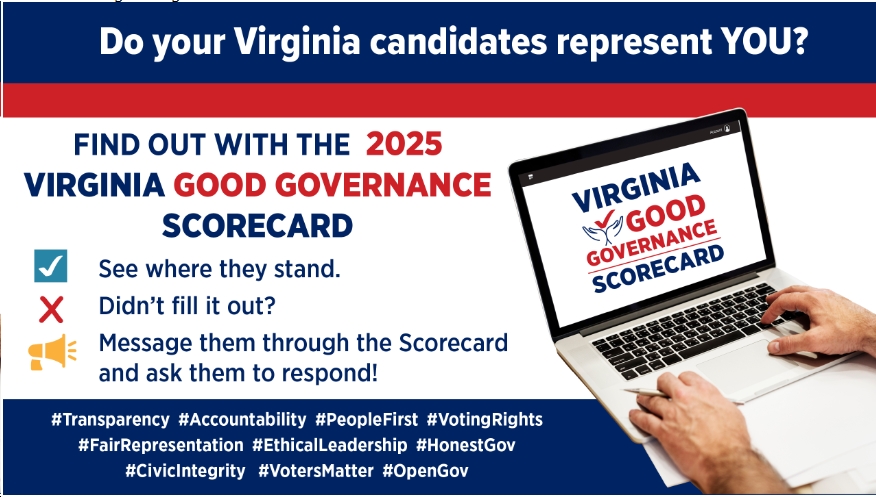( – promoted by lowkell)
This is the third part of a twelve part series looking at the challenges, obstacles, and future possibilities of Virginia Democrats. Day one focused on challenges facing Virginia Democrats in competitive districts, Day two focused on problems with turnout. Thank you for reading, make sure you vote on the poll at the end!
On the third day of Christmas, the Commonwealth of Virginia gave to me…FLASH!
Hark! I am the Ghost of Christmas Past! I represent poor choices, mistakes, and questionable judgment. Let us travel first to 2009, the year in which eight Democratic incumbents were defeated during a landslide Republican election. Listen to my warnings!
In 2009, the Democratic Caucus spent almost $100,000 assisting Democrat Carole Pratt’s campaign in the 6th District, an overwhelmingly Republican district where Bush had won over 60% of the vote in 2004 and where Anne Crockett-Stark had knocked off Democrat Benny Keister in 2005. In 2008, Obama managed just under 38% of the vote, 1% ahead of Kerry’s 2004 performance. Yet the House Democratic Caucus led by Matt Mansell decided to prioritize this race where his mother was running …
The result? Pratt received less than 35% of the vote. And elsewhere, incumbent Democrats dropped left and right, for a total of eight defeated incumbents, including some by the narrowest of margins: Mathieson by 14 votes, Valentine by 209, Nichols by 269, and Vanderhye by 422.
Let’s travel now to 2011, when long time Delegate Watkins Abbitt retired and opened up the 59th District. Connie Brennan ran against Republican Matt Fariss, who had a questionable legal record.
There was blood in the water, but unfortunately the district had been heavily gerrymandered. Brennan’s base in Nelson was split in half, while more conservative Campbell County was added to the district. Under the old lines, Obama tied McCain almost 50%-50%, but he lost under the new lines with only 41% of the vote. A pretty impressive work of gerrymandering, kudos GOP!
As a result, Fariss still won with 53% of the vote, which was behind Republican performance but not enough to keep him out of office. A good lesson on just how difficult it is to change the dynamics of a race, even with a questionable candidate.
Have Virginia Democrats learned the lessons of these campaigns? Decide for yourself.
In 2013, the party again highlighted a challenger in the 6th District. Party insiders widely believed that Democrat Jonathan McGrady was going to defeat Republican Jeff Campbell for the open seat. The House Caucus’s select pollster (they won’t allow top-tier candidates to use any other pollster) had McGrady up by double digits in early October.
The 6th District is heavily Republican. Obama received 34% of the vote in 2008 and 31% in 2012. It would have been a significant coup if McGrady had pulled off an upset, so much so that leading by double digits should have been a very questionable poll result.
The result? McGrady won less than 37% of the vote.
I don’t know the true details of what went wrong with the polling; the establishment has circled the wagons and won’t discuss how they blew this one. I’ve been told that the excuse is that the polling firm incorrectly weighed party identification in the poll. But if that were truly the case, the poll should also have produced bizarre results in the top of the ticket, either showing McAuliffe winning or competitive with Cuccinelli. Such a result would have been a significant outlier compared to other polling at the time and should have triggered a re-polling by the firm, but that didn’t happen. This is inexcusable for a professional political polling firm; they were allowed to do so by the House Caucus and its outgoing director, Jody Murphy.
Also in 2013, long time incumbent Republican Joe May was defeated in his primary by conservative Tea Partier Dave LaRock. Democrats had hopes for their candidate, Mary Daniel, to win against the out of touch LaRock. He may have been out of touch with mainstream Virginia, but LaRock’s conservatism did not alienate the Republican base in the district. The 33rd was a district where Obama received less than 42% of the vote, the district trending more Republican in 2012 than in 2008. It would have been a significant gamble to bet that just being an outspoken and offensive Tea Partier could cost LaRock the race in this heavily Republican district. But it’s a gamble the House Democrats took, devoting resources into the long-shot race instead of focusing on low-hanging fruit elsewhere.
Daniel won 43%, LaRock down to “only” 54%, with a third party candidate grabbing 3% of the vote.
Boysko of course lost by 32 votes after a recount, Bell lost by 195 votes, McPike lost by 234, Murphy lost by 431, Qarni lost by 498, Farinholt lost by 537, Miller lost by 634, and Harder lost by 892.
As I leave you to ponder these lessons from the past, consider this future possibility. Republican State Senator Emmett Hanger is being targeted by the far right over Medicaid expansion. Hanger is no stranger to primary challenges, having won in 2007 against a proto-Tea Party revolt over his vote for Warner’s tax increases. Could Hanger be knocked off by the Tea Partiers in 2015?
If they do, should Democrats devote resources trying to win the district? Could an extreme Tea Partier put the district in play?
The State Senate majority depends on Phil Puckett. Democrats need to challenge more competitive districts as an insurance policy. Hanger represents a district where Obama received just 36% of the vote in 2008 and 35% in 2012. It is a district that Mark Warner, with his landslide win against the incompetent Jim Gilmore, won only 51% of the vote. If Warner himself, walking on water, can only barely win the district in the best political climate for Democrats in decades, what are the odds of another Democrat coming close?
[poll id=”
123
“]


 Sign up for the Blue Virginia breaking news newsletter
Sign up for the Blue Virginia breaking news newsletter











